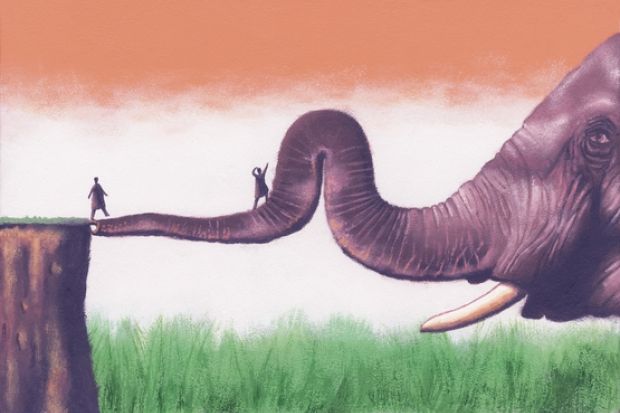Democracy and capitalism can make uneasy bedfellows. The need to appease voters and agree deals to get legislation passed often means that democratic societies are slow to take advantage of market changes that rely on government-level intervention.
But the democratic process provides a system of open debate and scrutiny. This means that by the time a law is passed that poses a potential threat to the economy, it has been thoroughly reviewed. As a result, seriously damaging legislation is less likely to make it on to the statute book.
However, in India, the concessions made during the development of what would seem to be an innocuous piece of legislation, the Foreign Education Providers Bill, could damage the country's economic future.
The reason that such a seemingly innocent piece of legislation could be so damaging lies in the drivers of economic growth in the country. Unlike China, where manufacturing is king, the largest provider of foreign investment in India is the service sector. This has allowed it to expand while investing only about 2 per cent of its gross domestic product in infrastructure, compared with China's 19 per cent.
You only have to visit both countries to see that India's infrastructure has been left behind. Mumbai and Delhi's old airports, slum dwellings, power outages and crumbling civic buildings offer a marked contrast with the smart high-rises and the super express trains in Shanghai or Beijing.
But rather than roads, bridges and airports, it is human infrastructure that makes India an attractive place for Western investment. This human infrastructure includes democracy and a separate judiciary (which offer stability to foreign investors), an English-speaking workforce and, most importantly, good-quality graduates.
However, the success of the service sector means that there is a widening gap between the number of skilled tertiary workers in the labour force and the higher education sector's ability to provide them.
To close this gap and maintain its human infrastructure, India needs to raise its tertiary-level enrolment rate from the current 12 per cent to 21 per cent by 2017 - and even this will only bring it in line with the Asian average.
This will require another 1,500 higher education providers. The government is committed to increasing higher education funding fivefold, but even that will not be enough.
The state has acknowledged that it needs to attract overseas universities to India, hence the Foreign Education Providers Bill. It is being developed as a means of allowing overseas universities to set up campuses in India - thus providing the high-quality graduates who are needed if the country is to continue economic growth based on high-level service jobs rather than low-level manufacturing ones.
But over the four years it has taken the bill to reach Parliament, it has been diluted to take account of opposition by the Left, which sees the bill as socially divisive, and individual states, which do want to see their involvement in tertiary education diminished, to any outside interference in Indian education.
Now any potential foreign partner has to post a $10 million (£6.7 million) corpus fund, invest 51 per cent in the business, not take any profit out of the country and allow the Indian government to appoint the chancellor of the campus.
The bill has gone through Cabinet and has now been presented to Parliament, where it seems that the Left will dilute it further. Proposals that overseas universities be part of the quota system for disadvantaged castes and that the government set fees are some of the concessions that the socialists are looking for, but they would make it very difficult for foreign partners to work in the country.
It would be ironic if the democratic process, with its need to offer concessions, is the reason why economic growth slows. For although India's democracy and its separate judiciary create the environment where business can be done, without good-quality graduates there will be no workforce to do it. And without a workforce there can be no service sector. The Indian economic-growth model, based as it is on a skilled workforce rather than cheap manufacturing, is surely a more attractive option for developing countries and should be a template from which others learn.
So let us hope that the democratic process works its slow way forward and that the resulting legislation allows overseas universities to invest in sustainable relationships with the Indian government - relationships that provide for the needs of both. After all, we all have a vested interest in making the world's largest democracy a success.
Register to continue
Why register?
- Registration is free and only takes a moment
- Once registered, you can read 3 articles a month
- Sign up for our newsletter
Subscribe
Or subscribe for unlimited access to:
- Unlimited access to news, views, insights & reviews
- Digital editions
- Digital access to THE’s university and college rankings analysis
Already registered or a current subscriber? Login
